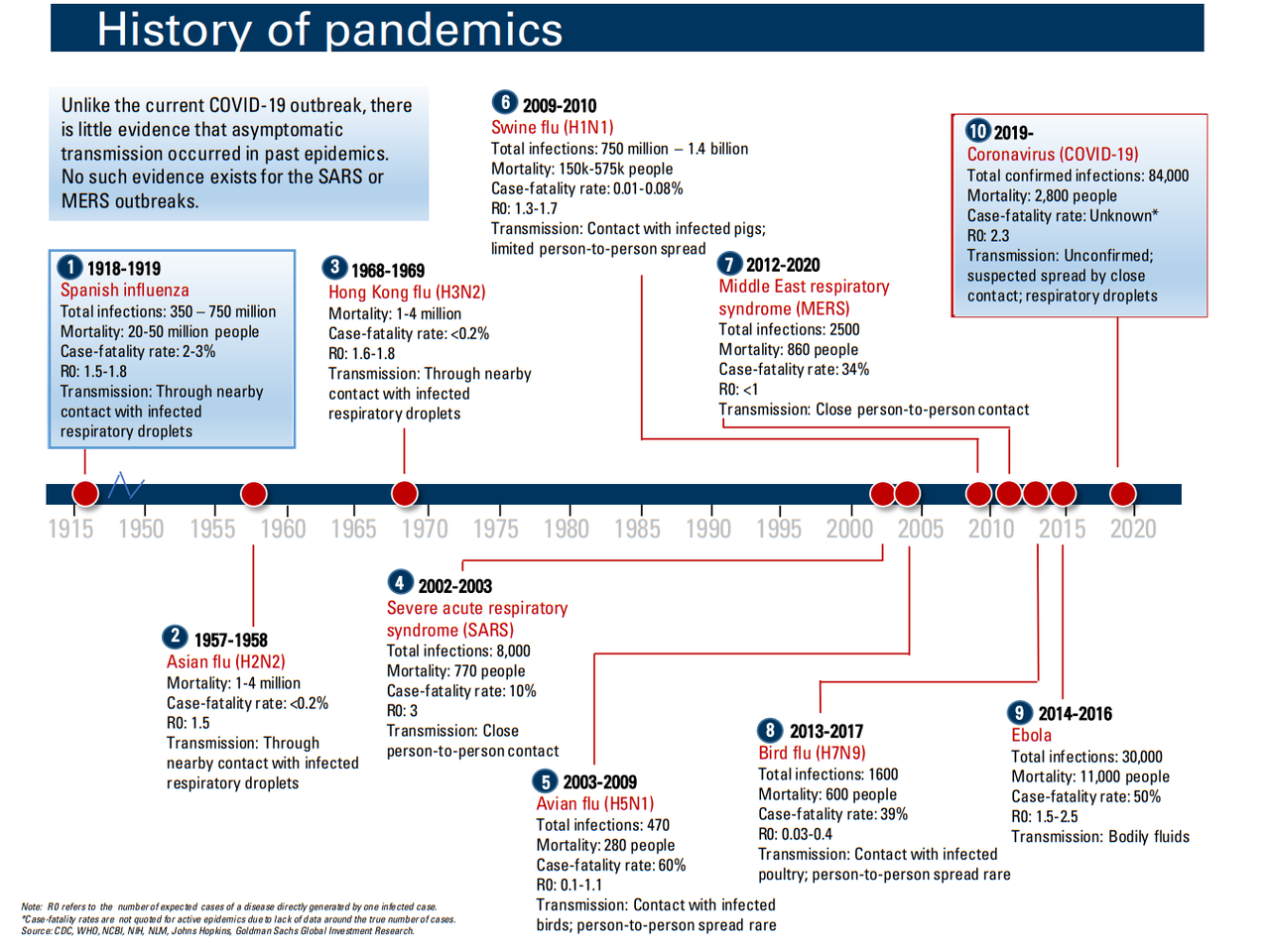|
Up to half the infected in Iceland have no symptoms
And the other half have a minor cold. 17 are ill, one had died.
|
Oxford Model: Coronavirus May Have Already Infected Half of U.K. Population
Because testing regimens across the world have varied tremendously, the actual mortality and hospitalization rates of COVID-19 have been hard to pin down. But modeling by researchers at the University of Oxford could provide some welcome good news, even if the initial takeaway doesn’t seem so promising. According to hypothetical modeling from Oxford’s Evolutionary Ecology of Infectious Disease lab, half of the population of the United Kingdom may have already been infected with the coronavirus. If this modeling is confirmed in follow-up studies, that a minuscule number of those infected require hospital treatment, with a majority showing very minor symptoms, or none at all.
|
Fundamental principles of epidemic spread highlight the immediate need for large-scale serological surveys to assess the stage of the SARS-CoV-2 epidemic
Abstract
The spread of a novel pathogenic infectious agent eliciting protective immunity is typically characterised by three distinct phases: (I) an initial phase of slow accumulation of new infections (often undetectable), (II) a second phase of rapid growth in cases of infection, disease and death, and (III) an eventual slow down of transmission due to the depletion of susceptible individuals, typically leading to the termination of the (first) epidemic wave. Before the implementation of control measures (e.g. social distancing, travel bans, etc) and under the assumption that infection elicits protective immunity, epidemiological theory indicates that the ongoing epidemic of SARS-CoV-2 will conform to this pattern. Here, we calibrate a susceptible-infected-recovered (SIR) model to data on cumulative reported SARS-CoV-2 associated deaths from the United Kingdom (UK) and Italy under the assumption that such deaths are well reported events that occur only in a vulnerable fraction of the population. We focus on model solutions which take into consideration previous estimates of critical epidemiological parameters such as the basic reproduction number (R0), probability of death in the vulnerable fraction of the population, infectious period and time from infection to death, with the intention of exploring the sensitivity of the system to the actual fraction of the population vulnerable to severe disease and death. Our simulations are in agreement with other studies that the current epidemic wave in the UK and Italy in the absence of interventions should have an approximate duration of 2-3 months, with numbers of deaths lagging behind in time relative to overall infections. Importantly, the results we present here suggest the ongoing epidemics in the UK and Italy started at least a month before the first reported death and have already led to the accumulation of significant levels of herd immunity in both countries. There is an inverse relationship between the proportion currently immune and the fraction of the population vulnerable to severe disease. This relationship can be used to determine how many people will require hospitalisation (and possibly die) in the coming weeks if we are able to accurately determine current levels of herd immunity. There is thus an urgent need for investment in technologies such as virus (or viral pseudotype) neutralization assays and other robust assays which provide reliable read-outs of protective immunity, and for the provision of open access to valuable data sources such as blood banks and paired samples of acute and convalescent sera from confirmed cases of SARS-CoV-2 to validate these. Urgent development and assessment of such tests should be followed by rapid implementation at scale to provide real-time data. These data will be critical to the proper assessment of the effects of social distancing and other measures currently being adopted to slow down the case incidence and for informing future policy direction.
|
|
|
|
How accurate is the test? This retracted paper says it's right 1 out of 5 times.
This retracted paper about false positives giving us the impression there are asymptomatic patients suggests 80% inaccuracy. That is, the test is correct one in 5 times.
|
|
High coronavirus attack rate on cruise ships likely due to many asymptomatic people: CDC
CDC said available statistical models of the Diamond Princess outbreak suggest that 17.9% of infected persons never developed symptoms.
|
|
Covid-19: four fifths of cases are asymptomatic, China figures indicate
New evidence has emerged from China indicating that the large majority of coronavirus infections do not result in symptoms.
Chinese authorities began publishing daily figures on 1 April on the number of new coronavirus cases that are asymptomatic, with the first day’s figures suggesting that around four in five coronavirus infections caused no illness. Many experts believe that unnoticed, asymptomatic cases of coronavirus infection could be an important source of contagion.
A total of 130 of 166 new infections (78%) identified in the 24 hours to the afternoon of Wednesday 1 April were asymptomatic, said China’s National Health Commission. And most of the 36 cases in which patients showed symptoms involved arrivals from overseas, down from 48 the previous day, the commission said.
China is rigorously testing arrivals from overseas for fear of importing a fresh outbreak of covid-19.
Tom Jefferson, an epidemiologist and honorary research fellow at the Centre for Evidence-Based Medicine at the University of Oxford, said the findings were “very, very important.” He told The BMJ, “The sample is small, and more data will become available. Also, it’s not clear exactly how these cases were identified. But let’s just say they are generalisable. And even if they are 10% out, then this suggests the virus is everywhere. If—and I stress, if—the results are representative, then we have to ask, ‘What the hell are we locking down for?’”
|
|
|

